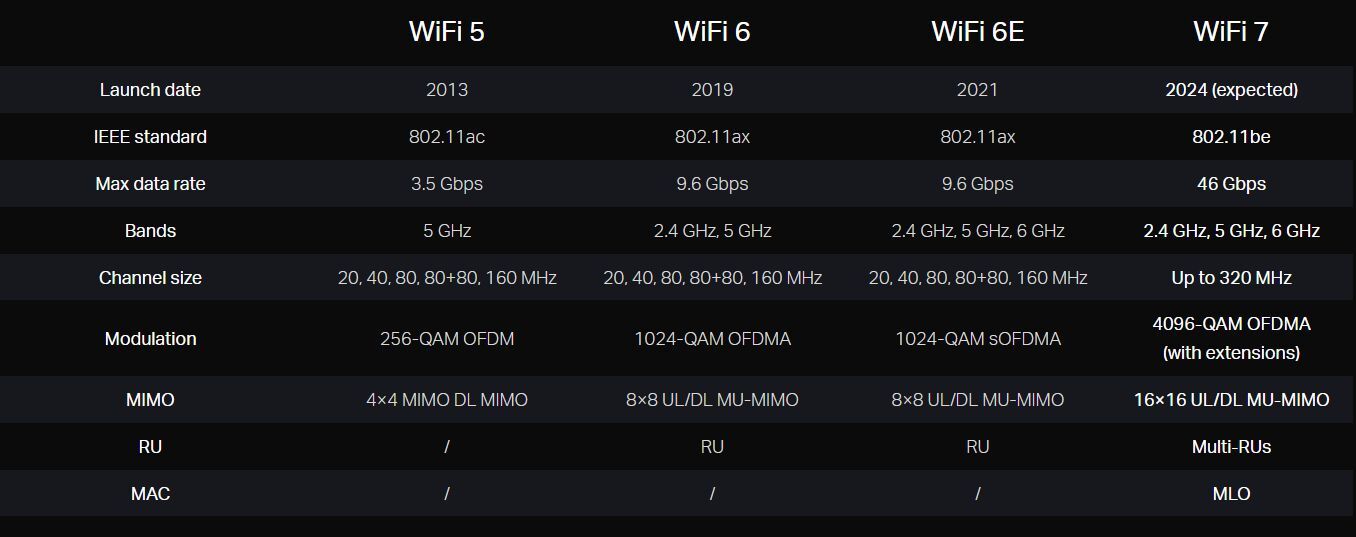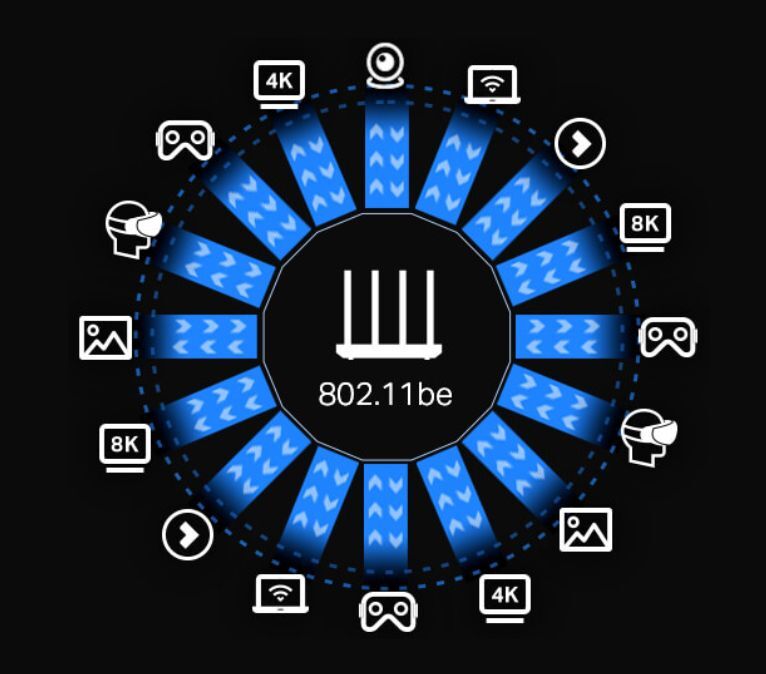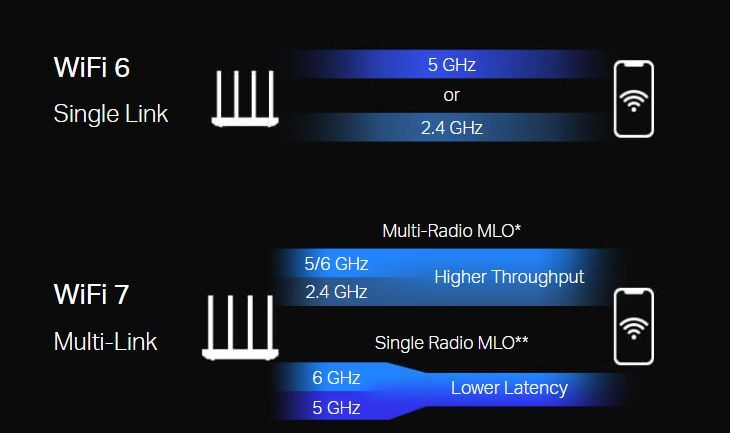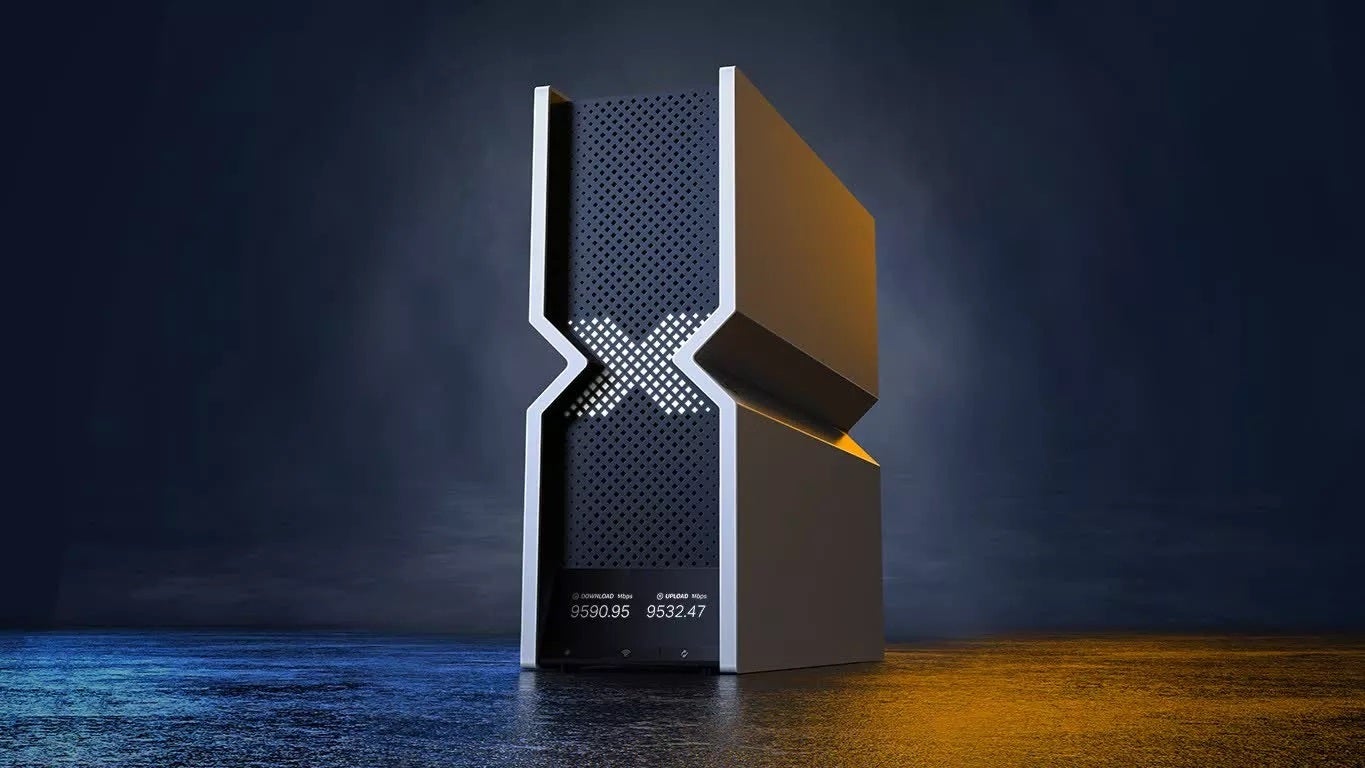Wi-Fi 7 explained: Everything you need to know،
While the world was slowly adopting Wi-Fi 6 and Wi-Fi 6E, the Wi-Fi Alliance unveiled Wi-Fi 7! It's the next big breakthrough in wireless data transfer and has the potential to rid us of pesky cables once and for all.
What is Wi-Fi 7? How is it different from Wi-Fi 6 and Wi-Fi 6E? What benefits does this bring? What do you need to get Wi-Fi 7 and when will it be available? These are all valid questions that we will try to answer in the next paragraphs.
What is Wi-Fi 7?
We won't delve into the physics of wireless data transfer, as we already did in our Wi-Fi 6E article. If you want to learn more about radio waves and frequencies, check out this article.
Wi-Fi 7 is the latest (seventh) generation of the wireless data transfer standard and offers substantial upgrades and benefits over the previous generation of Wi-Fi standards. It is much faster, can transmit data to multiple devices simultaneously and has much lower latency. Let’s take a deeper look at some numbers.
Advantages of Wi-Fi 7 over Wi-Fi 6 and Wi-Fi 5
The first concerns transfer rates. We need faster and faster data transfer speeds as our files become larger and larger. Wi-Fi 7 uses three frequencies: 2.4 GHz, 5 GHz and 6 GHz, and also uses a larger channel size and modulation to deliver up to 96 Gps. You can see the detailed differences in the table below.

Image source TP-Link
Another big advantage is the 16×16 MU-MIMO technology, which increases the number of spatial channels to 16. Simply put, Wi-Fi 7 is capable of transferring data to 16 devices simultaneously.


Image source TP-Link
Last but not least, Wi-Fi 7 uses multiple channels even when transferring data to a single device. The standard uses all three frequencies (2.4 GHz, 5 GHz and 6 GHz), which results in lower latency (100 times lower compared to Wi-Fi 6), better stability and higher reliability.


Image source TP-Link
Potential applications of Wi-Fi 7


What does all this mean in practice? Wi-Fi 7 will open up new possibilities in all areas that depend on wireless data transfer. AR/VR is an example. These headsets need a lot of data to flow between the headset and the processing unit (which could be removed from the headset, saving weight and making things much more comfortable). With the help of Wi-Fi 7, you will be able to stream 4K. and 8K video data without lag or stutter. The lower latency will also allow players to play competitively over wireless connections and boost the mobile gaming industry in the long term.
With a Wi-Fi 7 router, all your gadgets and smart devices will work much faster and more reliably. Think smart speakers, cameras, smart TVs, light bulbs and thermostats, all with enough bandwidth and speed to deliver the best performance.
What do I need to make Wi-Fi 7 work?


Wi-Fi 7 routers are already in stores
You need a Wi-Fi 7 router and any other gadgets that would connect to the router must support Wi-Fi 7 to get all the benefits of the standard. Don't worry, Wi-Fi 7 routers are already in stores, and while few devices currently support the standard, the routers are backwards compatible, meaning they will work with all your Wi-Fi 6 or Wi-Fi 5. devices.
This is a great way to future-proof, as this standard will quickly spread across different devices, such as smartphones, laptops, gaming consoles, etc.
Do I really need Wi-Fi 7?
Another solid question. And the answer, as always, is “it depends.” If you already have a Wi-Fi 6 router and don't need super-fast speeds or 16 separate connections to different devices, then probably not. On the other hand, if your home is smart or your setup is wireless, meaning you watch 4K streaming, game competitively on your laptop, use multiple Wi-Fi-connected smartphones in your household and have multiple devices that require a fast wireless connection, then you will greatly benefit from upgrading to Wi-Fi 7.
















